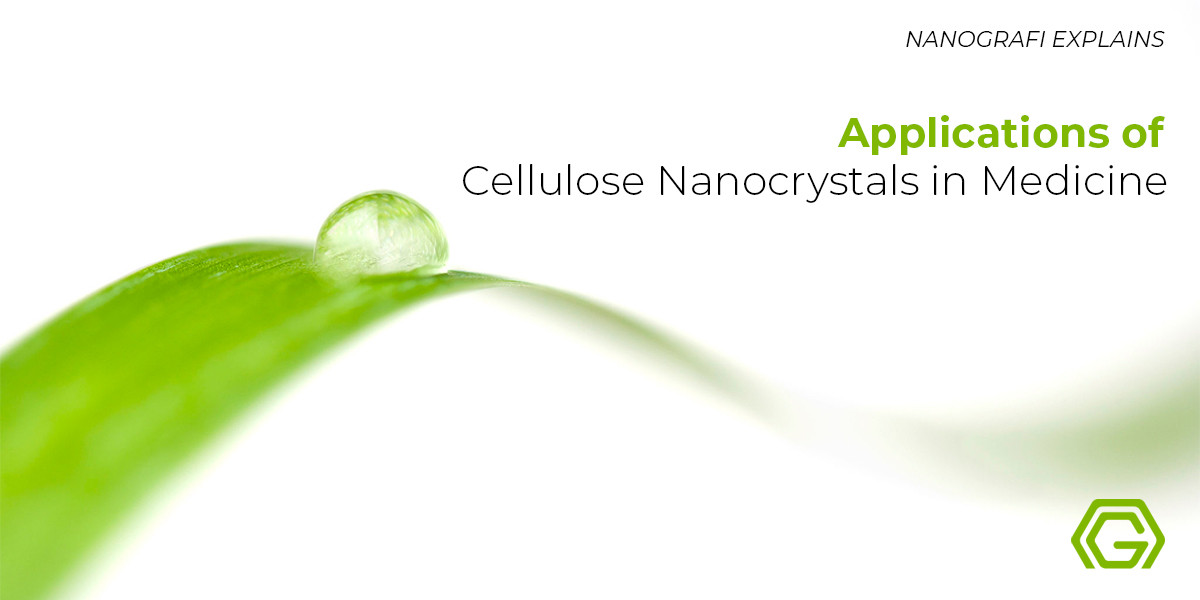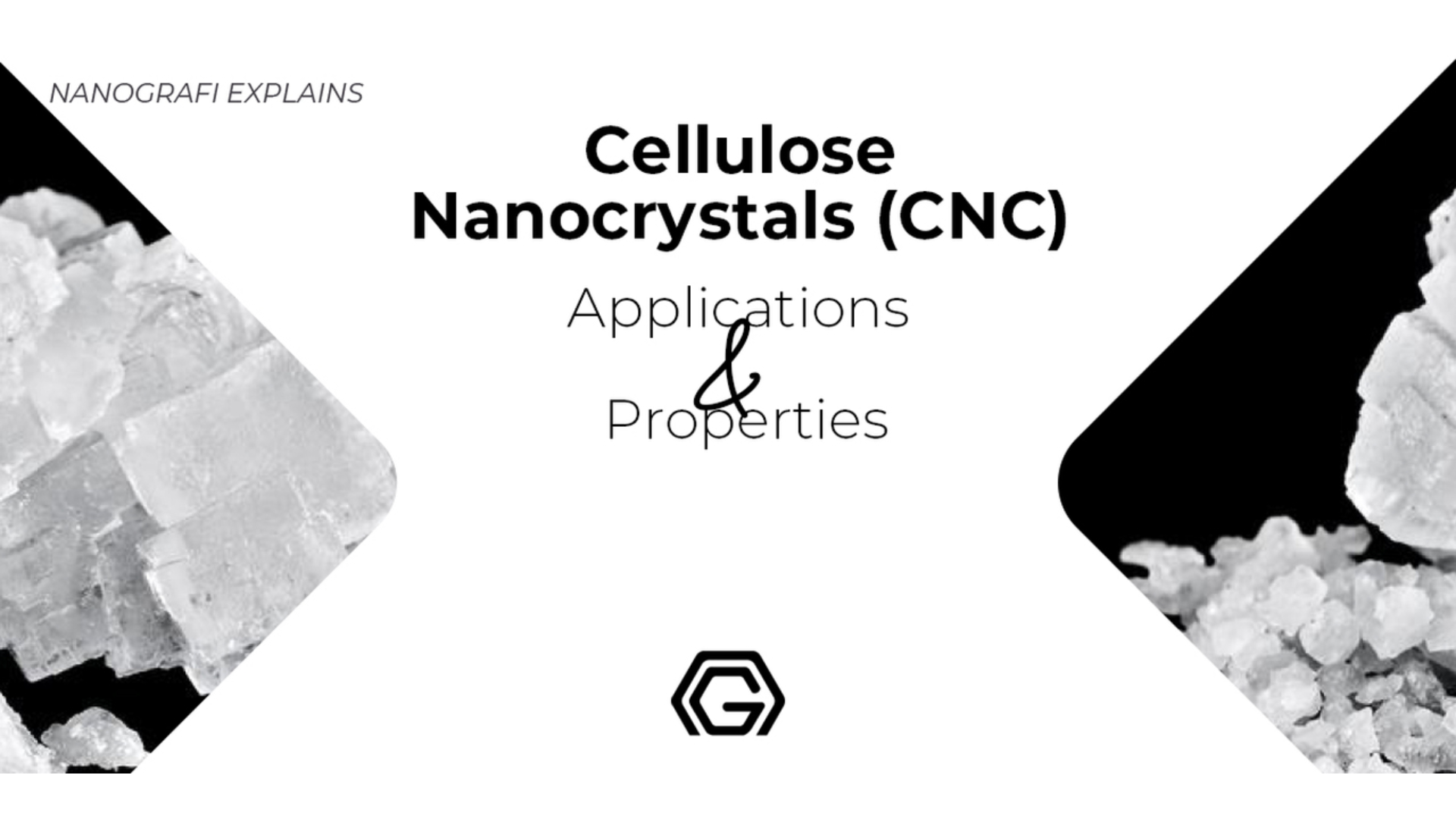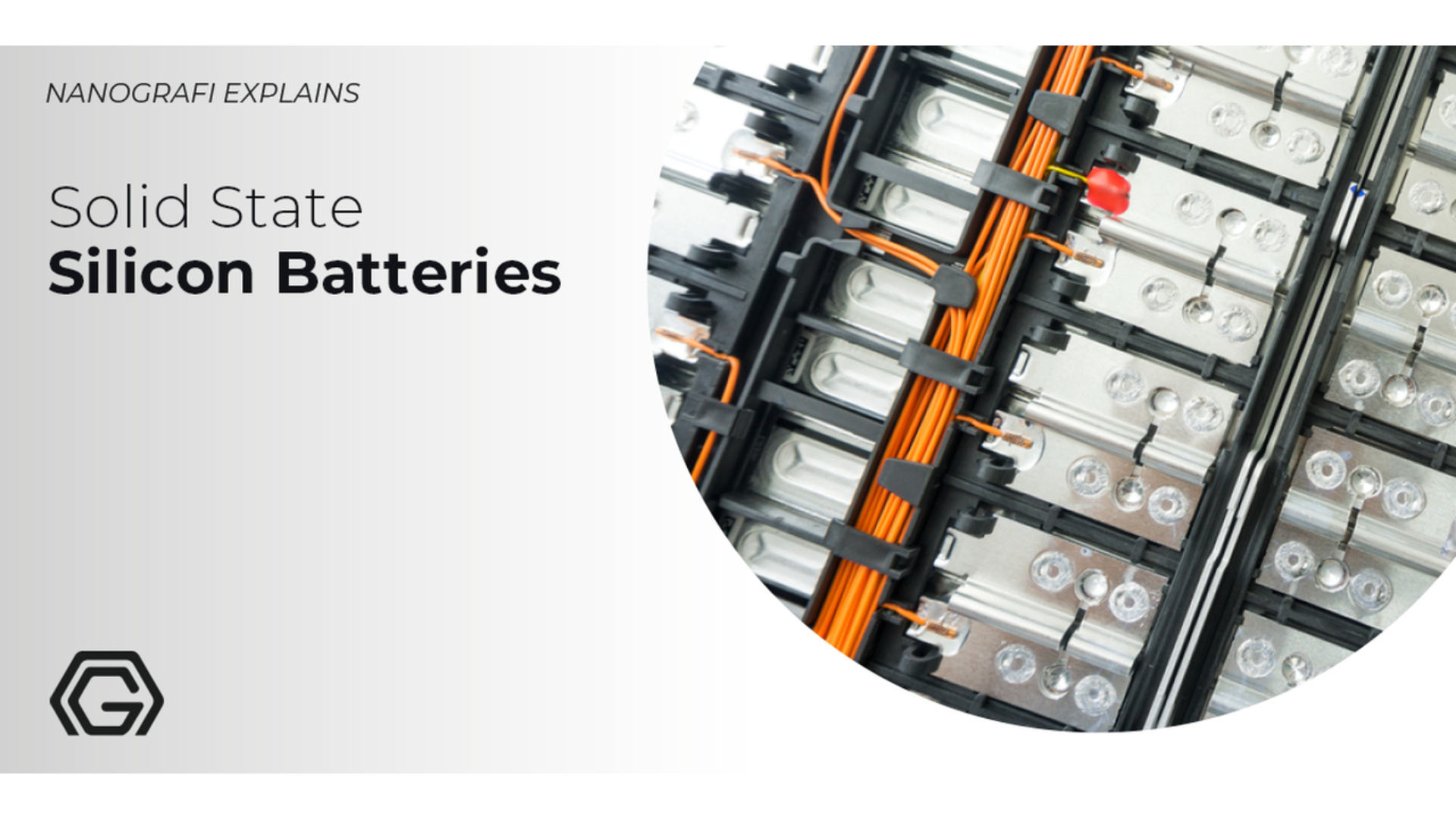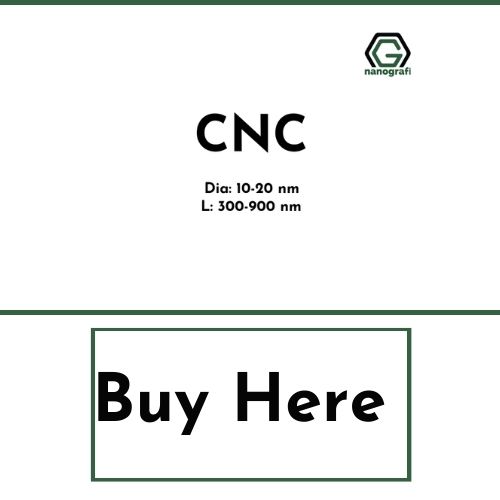Applications of Cellulose Nanocrystals in Medicine
Cellulose nanocrystals (CNCs) are excellent nano-material. CNCs possess numerous characteristics, specifically in low cost with chemical stability and bio-degradability.
Over the past few years, a huge amount of attention is gained by the CNCs based materials and they are utilized broadly in nanomedicine, pharmaceutical industry, and biomedical materials. It is because of various drug-supplying possibilities that the industry of CNCs is booming. Various factors determine whether the drug delivery is going to be successful or not. CNCs are also utilized in the transdermal preparations for enhancing the clinical results. Innovative applications in diverse fields like catalysis, electronics, material sciences, and biomedical engineering, is common for the CNCs. It is because of its remarkable nature, for instance, its functionalization potential for developing numerous products and replacing non-biodegradable materials and petrochemical materials, high surface area, non-toxic, and renewable, that they have gained a huge amount of attention. In this context, Nanografi's Cellulose Nanocrystal (CNC) products make a difference in innovative industrial applications by providing sustainable and high-performance solutions.
Introduction
There has been an increase in the interest in the development of the applications for renewable and low-cost resources over the past decade, with the severe environmental degradation and fatigue and excessive destruction of the fossil resources. Cellulose exists in huge amounts in bacteria and plants, having a significant influence on macromolecule polymer material synthesis. In numerous industrial applications, cellulose nanocrystal (CNC) displayed its important prospect due to its great material characteristics.
Cellulose is made up of glucose and it is a macromolecular polysaccharide. Moreover, it's the most widespread and diverse polysaccharides group in nature. Cellulose nanocrystal exists broadly in the capsular polysaccharide of bacteria and plant fibers. CNCs have a series of properties of biodegradability, biocompatibility, low density, large specific surface, high strength, and high crystallization. Thus, it is used usually in the construction field, barrier industry, pharmacy, electronics, foodstuff, and medicine above all. Significant chemical changes, regeneration, biodegradation, and low density are included in the best special characteristics of cellulose and its derivatives.
The acid Hydrolysis method is used to obtain the CNCs. Cellulose nanocrystals (CNCs) have nanometer length and width, and they are also called cellulose mustache. The source of cellulose is hardwood, softwood, cotton, and bacteria. CNCs hydrogels are of huge importance in wastewater treatment, biosensing, and biomedical applications, because of their non-toxicity, swellability, and cytocompatibility. The CNCs self-assembly process can be affected by various external factors like temperature and pH. For decades, cellulose has been commercially utilized by humans. Cellulose has been processed for nanocellulose extraction as it is extremely significant for various industrial raw materials because of its desired characteristics. During cellulose synthesis, there is an accumulation of the cellulose microfibrils in the outer cell wall of the bacteria. There are various steps involved during manufacturing and crystallization.
Source of The Cellulose Nanocrystals
Other than plants, one can find cellulose nanocrystals in various microorganisms like algae, bacteria, and fungi. Previously, cellulose nanocrystals were included in another polymer for the system of drug delivery. Usually, cellulose nanocrystals stand for the mesoporous structure with the crystalline structure, allowing target molecules’ rapid dispersion and absorption in the solution. A new class of material applications is represented by these remarkable characteristics i.e. catalysis, photonics, and sensing. CNCs are also being utilized in treating the medical devices and the wastewater, whereas, the colloidal metal nanoparticles accumulate and release in solution, resulting in poor surface activity, poor chemical stability, and thus low application efficiency.
Cellulose nanocrystals are appropriate to produce new functional nanoparticles in various scientific fields as they are natural, stable nanostructural biomaterials. Many of the applications are possessed by the CNCs in biomedical fields like nanomedicine, biomedical implants, tissue engineering, and wound dressing. Specifically, CNCs-based nanomedicine can also treat tumors because of their nanoscale size, shape, and good physiochemical characteristics of the functional surface groups. As compared to the spherical nanoparticles, the rod-shaped nanoparticles are internally faster.
There have been testings of the CNCs-based rod-shaped nanomedicine in various groups as nano-vectors. The group of Kam C. Tam did modifications to develop the chitosan-oligosaccharide (CSOS) surface. Cellulose nanocrystals are the first choice for some applications and it is being searched by stabilizer to select oil liquids and water, whereas a very significant role is played by the needle-like shaped CNCs picks in stabilizing the emulsions. Currently, the researchers are making materials made from CNCs for various new applications. The nature of these nanocrystals is hydrophilic.
Methods for Preparation of Cellulose Nanocrystals
The major methods to currently develop the cellulose nanocrystals are the mechanical process, the biological process of hydrolysis, the chemical process of hydrolysis, and the combined method of the above processes.
The acid Hydrolysis method is used to obtain the CNCs. Cellulose nanocrystals (CNCs) have nanometer length and width, and they are also called cellulose mustache. The source of cellulose is hardwood, softwood, cotton, and bacteria. CNCs hydrogels are of huge importance in wastewater treatment, biosensing, and biomedical applications, because of their non-toxicity, swellability, and cytocompatibility. The CNCs self-assembly process can be affected by various external factors like temperature and pH. For decades, cellulose has been commercially utilized by humans. Cellulose has been processed for nanocellulose extraction as it is extremely significant for various industrial raw materials because of its desired characteristics. During cellulose synthesis, there is an accumulation of the cellulose microfibrils in the outer cell wall of the bacteria. There are various steps involved during manufacturing and crystallization.
Applications of Cellulose Nanocrystals
Applications of Cellulose Nanocrystals in the Biomedical Field
There is a long history of cellulose usage in the biomedical field. Microcrystalline cellulose (MCC), propellant cellulose, methyl, and its derivatives like carboxymethyl cellulose (CMCs) are included in the medical-grade cellulose's currently marketed forms. Whereas, the usage of commercial CNCs in the biomedical field is still in its infancy. CNCs have been studied by Jorf et al. for a broad variety of medical usages, like medical implants, modification, healing, tissue repair, and drug supply.
In the tissue repairing field, replacement and healing usually work on the bacterial cellulose (BC) hydrogels because of their three-dimensional nanofibers network structure classification, which can be controlled directly during the biosynthesis for repairing and treating tissues like bones and skin. More progress on the parasites, morphology calcifications and other drugs are studied by Sophia M et al., particularly those drugs that are associated with the sticky wounds. A remarkable histomorphological profile was reported by them as a diagnostic aid to integrate these fillers, wearing that slight deviations were there in comparison with the MCC (microcrystalline cellulose) filler. One can generally administer the short-life medications in a controlled manner, which can contain some benefits in the form of dosage, like a decrease in the frequency of dose, lessening in fluctuations in the concentration of plasma, enhancement in the treatment method, and adherence to the patient.
There has been the conduction of an extensive number of studies on BC's controlled-release and other polymer inputs. Making BC-based nanocomposites for optimizing the controlled drug delivery is a major way of enhancing the BC release effect. The degree of joint inflammation is increased by decreasing the ionic strength and increasing the radiation dose. Sensitivity is shown by these compounds toward pH. These BC-PAA nanocomposite hydrogels were monitored as a pH-sensitive controlled substance. It utilizes numerous bovine serum albumin (BSA) as a model compound for in vitro drug delivery. There has been traditional development of the BC in static conditions, but fermentation is required for many applications in flammable or static conditions. Although, very different kinds of cellulose are obtained under these conditions. Gelatinous pellicles are made by a stable culture. Although, fibers are created by the dynamic culture with crystalline lentils and polymerization and the small-angle molecules that were created because of the shear stress during mixing.
It was explored by Jackson et al., that CNCs bind large amounts of ionic hydrophilic antibiotics, that escape completely in one 24-hour. The pessimistic reaction was neutralized by Cetyltrimethylammonium bromide (CTAB). Therefore, huge amounts of hydrophobic anticancer drugs are significantly bound by the CTAB-modified CNCs, for various days, paclitaxel and etoposide are escaped in a controlled manner. The drug is rapidly released in 1 hour by the CNCs-COS particles (chitosan oligosaccharide) that are filled with procaine hydrochloride. The CNCs-chitosan oligosaccharide particles have the potential of being drug carriers for rapid responses like oral cavity and wound-dressing. There are various treatments for the periodontal cavity. One can also install CNCs on the alginate-based nanocomposite microspheres for enhancing the drug's mechanical strength and its controlled drug release behavior. Bacterial cellulose (BC) was studied by Ullah H, et al., and he found that BC is a versatile biopolymer with remarkable material characteristics like filtrate, high purity, and comparatively high permeability to the liquids, and gases.
There were also studies in medicine and food and its hydrogels. BC utilizes meats for new usages like enzymes and cells as dietary supplements, low cholesterol diets, and traditional desserts in the food industry. BC's usage in food offers the basis for functional BC-based supplements and foods. BC-based drug delivery was adjusted further for control over the drug's release that responds to stimulation.
To get more information about the applications of cellulose nanocrystals,
you can read our blog post here.
Pharmaceutical Applications of the Cellulose Nanocrystals
Numerous kinds of cellulose nanocrystals have been tried to be used by researchers in the drug delivery industry, like drug encapsulation, covalent drug binding, hydrophobic drug binding, and direct drug binding. Recently, there has been the development of new methods for controlling the drug's release from the molecular levels through the binder's interaction between the CNCs that are negatively charged and the molecules of ionized drugs, using an aqueous sulfuric acid solution for MCC's hydrolysis provides the cellulose nanocrystals a negative surface charge, and a stable colloidal aqueous suspension. Raicopol et al., performed on the cellulose acetate/Mg-Al membranes’ nanocomposites in double hydroxide for removing the cells from wastewater as an effective method.
The evaluation of the nanocomposite membrane's thermal stability, surface characteristics, porosity, and morphology was carried out in numerous ways. In comparison with a cellulose acetate insert, enhanced permeability is possessed by them. Electrostatic interaction is shown by the membranes consisting of 4 % Mg-Al LDH between the negatively charged drug increase in the water flow and the pure polymer current as compared to the Mg-Al DLH layers that are positively charged. The production of aspirin (ASP), salicylic acid (SA), hydroxyethyl cellulose (HEC) based macromolecular prodrugs (MMPs), and hydrophilic cellulose ether is described by Abbas, K., et al. Each HEC repeat block (HECRU) ASP (DS) and SA generator levels vary from 0.53-1.50 and 0.60 to 2.18. There is an accumulation of the improved HEC-SA compound in a nanowire-like structure, whereas nanoparticles are formed by the HEC-ASP coating at the dimethyl sulfoxide (DMSO) and water interface.
Plasma concentrations (Temax), a maximum of 4.0 hours and 15.27 and 23.01 gL-1 of plasma concentration (Cmax), and 6.66 of plasma half-life and 1 hour are shown by the compounds after the oral administration in the rabbit samples. One can't convert SA and ASP's anti-inflammatory characteristics into compounds as shown by the immunomodulatory association. Compounds were safe for 24-hours administration in the 2-hours concentration range according to the cytotoxic profile. SA and ASP compounds' Tdm values increased as shown by the thermal analysis, which refers to the drug residues' abnormal thermal stability after the formation of MPD.
Microcrystalline cellulose (MCC) ultra-fine grades' new tablet variant was made by Levis SR et al., with different weight ratio percent for the pharmaceutical applications. Before using spray-drying to recover, sodium lauryl sulfate (SLS) was used for using the ultrasonic process. The tableting application has been outperformed by both of the new varieties in water extraction, leading to smoother particles in higher yields. The dissolution of the particles can be effectively slowed down by the amount of yield particular, lessening the formed particles' porosity and delaying their destruction.
Elongated nanoparticles have been studied by S. Dong et al., and recently, they have shown various advantages in drug delivery programs as compared to the spherical nanoparticles. More than their rectangular geometry, drug carriers are promoted for their lack of various surface hydroxyl groups and cytotoxicity by the cellulose nanocrystals. CNCs bonds have been synthesized by them with folic acid for chemotherapeutic agents' targeted delivery towards the spreading of the receptor-positive cancer cells. Brain tumor cells in mice and cellular bonding absorption in a human were mediated by the folate receptor. Immunofluorescence staining examined the expression of the folate receptors in the cells.
As compared to the combined cellular binding absorption of the proposed CNCs, the combined cellular binding absorption was higher. One could have determined the catalytic method with either cell reduction inhibitors or chlorpromazine. Cellulose acetate membranes' production from an electron efficient drug preparation (EDPs) and poly (4-vinyl pyridine-b-ethylene oxide) block copolymer (P4VP-B-PEO) oxide is described by Penabad-Pena L et al. A property like a membrane's role, contact angle measurement, and Fourier transferred infrared spectrometer (FTIR), corresponds to the comparative absence of the electrons impurities, is showed in the results. Also, the addition of 1 % P4VP-b-PEO into the cellulose matrix in most cases aims toward the twice-time increase in the membrane's absorption efficiency.
The resulting membrane is more effective as compared to the omeprazole for the compounds tested, followed by sulfadiazine and sulfamethoxazole. Soft materials production and development can be affected by this feature. It is because of this characteristic that they can remove and eliminate the fear of contaminants. Homogeneity is made up of an MCC as plastic materials for pH 102 as plastic material, and tensile strength is studied by Zahraa et al. There were investigations of the fragile direct compression materials sealing tablets with various mass ratios made up at 150 MPa of pressure. Tensile strength measures the resulting tablet’s quality. Material that’s majorly displaying plastic deformation. As compared to the brittle materials and glycolate, a significant characteristic is possessed by the sodium starch in the loading and unloading phase.
Note that the formed tablet’s tensile strength is directly related to the indirect energy and plastic, as it is determined by the elasticity and the brittle material’s presence negatively affects. The drug’s release rate from the controlled release osmotic delivery technology of ALZA corporation (OROS) is studied by Shanbhag A et al., as the semi-impermeable membrane controls it, which generally is made up of cellulose acetate (CA) with variable current. CA membranes’ resistance was matched with the CAB membrane and the CAB (cellulose acetate butyrate) was studied as a viable alternative. Remarkable drying characteristics are possessed by them, offering a special benefit for the heat-labile compositions.
As compared to the OROS system's performances, CAB membranes' characteristics were studied by them. Four different types were utilized by them and there were investigations on the concentrations of the plasticizer. Good drying characteristics are shown by the CAB-based membranes and they perform as the cellulose acetate. There was a linear relationship between the release rate and the fow catalyst level. The membrane's stability was assessed under different conditions. Cellulose acetate butyrate membranes are permanent cellulose acetate membranes. Usage of thinner membranes is allowed by the modified membrane structure, reducing membrane drying time, coating time, and costs of the material.
If you are interested in silicon batteries, read our blog.
Cellulose Nanocrystals as a Drug Carrier
There have been experiments by researchers with numerous approaches to utilizing the cellulose nanocrystals in the pharmaceutical industry. Covalent bonding of the drugs, association of the hydrophobic drugs, β-cyclodextrin (β-CD) direct binding to drug carriers, and carboxymethyl cellulose (CMC), has been made by Naderi et al. A pH-sensitive magnetic hydrogel was also discovered by them which was derived from chitosan (CS) and had no side effect was easy for being utilized for drug release. A natural chemical formula was used to synthesize the magnetic (Fe3O4) nanoparticles in N2 gas presence.
The effects of the magnetic (Fe3O4) nanoparticles on the CS hydrogels, β-CD, and CMC, to deliver the methotrexate drugs have been investigated. 11.6 and 6.32 emug-1 are the hysteresis loops of high magnetic hydrogen and low magnetic hydrogel CMC/CD/CS. There were studies on the suggested hydrogel swelling method in different ranges at different pH. A slight degree of swelling is shown by it. There were also investigations on the methotrexate (MTX) release under the influence of the external variable magnetic field atomic force microscopy. According to studies, one can use those hydrogel nanocomposites that respond to the external stimuli, for the drug delivery system.
Various highly cellulose beads (CBs) have been successfully developed by Voon et al. from the wastewater regenerating process. Curcumin is utilized as a model drug for examining the distribution profiles of different medium-sized cellulose beads under controlled conditions. Curcumin's loading time, increasing curcumin, characteristics, physical appearance, and other physical factors is used to mainly determine the efficiency and loading capacity of the curcumin in the cellulose beads. There were investigations of the kinetic profile of curcumin release by CBs with pH values like intestinal and digestive fluids, in adventure media. Under particular conditions, release kinetic models were utilized for promoting and interpreting the curcumin method. The modeling characteristics and the curcumin solution's density is improved by the curcumin loading's efficiency and speed in the cellulose beads. The release of curcumin changed the mean diameter for altering the motion profile.
Cellulose is made into a cost-sensitive and useful drug delivery carrier by the purified cellulose beads that are made from the wastewater. Colacino et al. developed chitosan (CS) and it was utilized as a vehicle for theophylline’s controlled delivery. The CNCs were periodically oxidized previously for attaining nanocellulose. At different weight ratios, dialdehyde and chitosan function as crosslinkers for forming the CNCs/CS compound. The swelling ratio test, Zeta potential measurement, and X-ray diffusion pattern (XRD) are used to highlight the developed compounds. The alkaline pH was increased by the isoelectric point as the chitosan's percentage in the hydrogel increased possibly because of the free amino groups' high content. There was also an increase in the composite material's swelling, resulting in a decrease in the cross-linking density, as drug hydrogels' swelling rate varies according to various pH values, drug excretion rate from compound hydrogels was almost 85 % in gastric fue (pH 1.5) and intestinal 23% (pH 7.4). Thus, CS/CNCs hydrogel can be implemented as the theophylline carrier.
Cellulose Nanocrystals as a Nanomedicine Cellulose Nanocrystals
Cellulose Nanocrystals are utilized as a Nanomedicine Cellulose Nanocrystals (CNCs) products in some nanomedical applications like bioimaging agents, biosensors, antibacterial agents, and tissue substituents. Antimicrobial characteristics are possessed by the antibacterial agents for killing gram-negative bacteria and human gram-positive pathogens. Higher antibacterial activity is shown by the CNCs. Cellulose acetate is made into the propionate matrix for making a whole biological scaffold in the CNCs' vascular tissue engineering. It also chemically grafts low molecular weight, nanocomposites mats for reinforcing the nanofibers. Nanofibers are particularly useful for numerous tissues as it enhances thermal stability, and mechanical characteristics and have a strong influence on the cellular organization in the human cells.
Conclusion
Cellulose nanocrystals have many usages in nature. They are utilized in biomedical and pharmaceutical fields, majorly in the transdermal preparations for enhancing the clinical results. Cellulose nanocrystals have a significant function in stabilizing the emulsions, the best candidates for the stabilizers are the single ovarian granules.
To get more information, you can visit Blografi.
References
https://www.researchgate.net/publication/348664477...
https://link.springer.com/article/10.1007/s10924-0...
https://www.hindawi.com/journals/ijps/2019/1767028...
https://www.dovepress.com/cellulose-nanocrystals-s...
Recent Posts
-
Turning Noise into Power: Energy Harvesting with Piezoelectric Nanogenerators
Ambient acoustic energy, once an untapped resource, is now being converted into sustainable electric …5th Mar 2025 -
Holey Super Graphene in Li-ion Batteries: Next Generation of Energy Storage
Holey Super Graphene (hG), also referred to as “holey graphene,” is redefining li-ion ba …7th Feb 2025 -
Future Communication with 5G Technology and Advanced Materials
5G technology opens the doors to a new era in communication with faster connection speeds, low laten …6th Feb 2025








